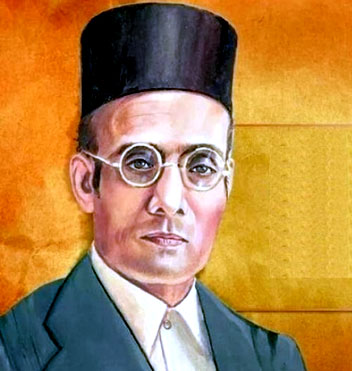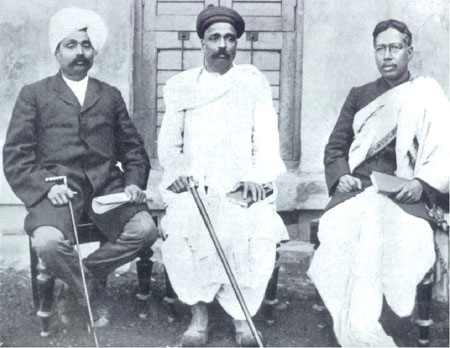Patriotic reflections in intent, endeavours and deeds of the individuals and society, integral to a nation are collectively perceived as swadeshi. Such patriotic reflections have economic, socio-cultural and ethnic dimensions including the ethos, language etc. The Swadeshi Movement has been the core of the Independence movement as well and has contributed a lot to the development of Indian nationalism. This swadeshi movement has got much wider support from the masses since 1906 against the erstwhile Partition of Bengal and ultimately turned into a full-blown independence movement in the early 20th century till we attained Independence.
The Vedic concept of nation inter alia has as well laid stress on building the capability of Rashtra to comprehensively care for sustained livelihood, safety and territorial integrity of the polity (Yajurved 22/22 and Atharved 19/41/1). Historically, ever since the awakening against colonial rule, the swadeshi movement, in the form of a boycott of foreign goods with a resolve to drive out the British and to give them a decisive blow in economic terms has been at the centre stage of our freedom movement as well. It has been well aimed at protecting and bolstering the livelihood of the citizens. Among the earlier proponents of economic patriotism were Bhartendu Harishchandra, Dadabhai Naoroji, Gopal Krishna Gokhale, Mahadev Govind Ranade, Bal Gangadhar Tilak, Ganesh Vyankatesh Joshi, and Bhaswat K. Nigoni who all promoted nationalism and economic patriotism in the people of Bharat in the first Phase of Swadeshi Movement they all attempted people against the drain of country’s economic resources. This first phase lasted from 1850–1904. Coinciding with it the Namdhari Sikhs also commenced a boycott of English cloth in Punjab (1871-1872). Ram Singh Kuka called for a boycott of English cloths, education and courts and instead promoted hand-spun cloths ‘khaddar’, vernacular education and khap panchayats. Besides, the Kuka Andolan of Namdhari Sikhs was a most fierce agitation was led against cow slaughter, along with a movement for Swadeshi.
The Kuka Movement of Namdhari Sikhs was sparked when in 1871 the deputy commissioner of Amritsar granted permission for opening a slaughterhouse in the Holy City. The sale of beef by that slaughterhouse led to a fierce agitation of the Namdhari Sikhs (also known as Kukas). In a dire action, five Namdharis were sentenced to death. In an outrage against this death warrant, a group of followers raided the slaughterhouse, killed the butchers, and set the cows free. For this act, four Namdharis were hanged on September 15, 1871. In an even worse anarchical action of the government, four months later, a Malerkotla judge ordered an ox to be butchered in front of a protesting Namdhari named Gurmukh Singh, and a clash ensued. A band of 200 Namdharis proceeded towards Kotla to avenge the wrong, leading to 15 deaths including eight persons from Kotla, and seven of their own.
The authorities in a more anarchical mode pronounced an unusual and hasty judgement within a day of their arrest and ordered the blowing off of 66 of them by cannon fire. On this martyrdom of 66 Sikhs, a memorial was built there to commemorate it by the 66 holes in the 66-ft memorial. This event of martyrdom has many legends embedded within. A man called Waryam Singh was too short-statured for the cannonball to hit him. He had then collected stones, created a mound and stood on top of the mound and offered for martyrdom. Another 12-year-old boy Bishan Singh was freed for being too young for capital punishment. On learning that he would be denied martyrdom, he rushed and assaulted British officials, and was immediately hacked to death.
In the 20th century, the movement gained much momentum in 1905 on the partition of Bengal. Revolutionary groups in the form of local clubs grew against it. Anushilan Samiti, with which Dr Keshav Baliram Hedgewar was also engaged and the parties like Jugantar Party made attempts of aggressive revolts against the British, including the campaign for swadeshi. The trio of three stalwarts the Lal-Bal-Pal organized several strong movements. Bal Gangadhar Tilak led Ganesh Utsav as a means to popularize the use and consumption of indigenous products from soil to sweets. Even, proceedings before the trio of Bal Gangadhar Tilak, Lala Lajpat Rai and Bipin Chandra Pal, Bhartendu Harishchandra had given a call for swadeshi.
Concerned at the partition of Bengal in 1905, Savarkar aggressively called for Swadeshi, including a call for the burning of all foreign clothing. In early October 1905, he delivered an aggressive speech in the hall of the Sarvajanik Sabha, Pune and inspired everyone present to mass burning of foreign garments and led the audience to a mass bonfire of foreign clothes and fabric
Bhartendu Harishchandra is the first person who had given an unambiguous and explicit call even much before this, in 1874 to boycott British as well as foreign goods and buy only the goods made within the country and by countrymen i.e., Made by Bharat. Another notable figure who acted upon Swadeshi is V. O. Chidambaram Pillai in Tuticorin, who took over British India Steam Navigation Company and converted it into an Indian-owned shipping company and named it Swadeshi Shipping Company in October 1906. Indians started ditching British goods for Indian products, even if they were costlier. The impact of these protected calls was heavy with the British seeing a quick 20 per cent fall in its product sales by 1906.
In the early 20th century, Savarkar was the earliest among the freedom fighters, who launched an organised as well sustained national campaign for Swadeshi. Thus, after Bhartendu Harishchandra, who had called for Swadeshi in 1874, Savarkar was the second such statesman to give an unequivocal call for Swadeshi and launch the movement for Swadeshi as early as 1905. Concerned at the partition of Bengal in 1905, Savarkar aggressively called for Swadeshi, including a call for the burning of all foreign clothing. In early October 1905, he delivered an aggressive speech in the hall of the Sarvajanik Sabha, Pune and inspired everyone present to mass burning of foreign garments and led the audience to a mass bonfire of foreign clothes and fabric. Soon, in the temple town of Omkareshwar in MP, priests organised a convention and backed the concept of Swadeshi, and in Poona, ladies from all walks of life came forward to boycott everything foreign, from Bengals to glasswares. Savarkar’s rousing speeches had far-reaching effects. The initial cry for Swadeshi erupted in Bengal. It erupted at the call given by Savarkar and others. Savarkar’s brother Babarao arranged a similar event in Nashik, which was wildly popular; this was the time when a remote event joined numerous Indian provinces in a call for Swadeshi. Bal Gangadhar Tilak had also participated in the event when the Abhinav Bharat group of Savarkar arranged the mass bonfire of Foreign garments. Savarkar had then paid a high price for his distinguishing role in the Swadeshi movement and he was expelled from Ferguson College. Bengali revolutionaries like Sri Aurobindo, Rabindranath and all the awakened leaders were at the forefront of the campaign for Swadeshi. The mainstream modern historians of left orientation mostly overlooked Savarkar’s contribution to Swadeshi. But, it was a full-blown movement for swadeshi that compelled the British to reunite Bengal within five years, and ultimately to leave the country in 1947. The revolt in the armed forces had a decisive impact in forcing them to leave.

“Concerned at the partition of Bengal in 1905, Savarkar aggressively called for Swadeshi, including a call for the burning of all foreign clothing. In early October 1905, he delivered an aggressive speech in the hall of the Sarvajanik Sabha, Pune and inspired everyone present to mass burning of foreign garments and led the audience to a mass bonfire of foreign clothes and fabric”
The movement was well strengthened by Mahatma Gandhi who took the pledge for a total boycott of foreign goods, organized Khadi spinning centres all over the country and branded Khadi spinners as freedom fighters He succeeded to lead the freedom movement in 1920 after the sad demise of Lokmanya Tilak. The burning of 150,000 English clothes at Elphinstone Mill Compound, Parel, Mumbai by the patriotic freedom fighters was a landmark event on 31 July 1921. It all had strengthened initially in 1894 when Tilak transformed the household worshipping of Ganesha into a grand public event (Sarvajanik Ganeshotsav) along with the celebration of Shivaji Jayanti. The Deccan Education Society that Tilak founded with others in the 1880s for swadeshi in education, still runs Institutions in Pune. The Swadeshi movement started in the Tilak era of the Congress at the beginning of the 20th century and became part of the Independence movement until that goal was achieved in 1947. Swadeshi and Khadi were the major tools for Mahatma Gandhi also to lead the Congress Party in the movement for freedom.
The major thrust of the Swadeshi Movement in those days was on the following three issues:
- Non-Cooperation with the British government and making it collapse.
- To boycott buying British goods made in our country.
- To create India’s own goods and buy those only.
As early as 1930, Babu Gainu a mill worker had sacrificed his life while picketing against the entry of foreign clothes. On 12 December 1930, a cloth merchant, George Frazier of Manchester was moving loads of foreign-made clothes. He was given police protection and the activists of Swadeshi were not allowed to move the truck, but the police forced the protesters aside and managed to get the truck moving. Babu Gainu firmly stood in front of the truck. The police officer ordered the driver to drive the truck over agitators. But the driver refused. After that, the English police officer drove the truck over Babu Gainu and crushed him. This resulted in a huge wave of protests throughout Mumbai and across the country.



















Comments